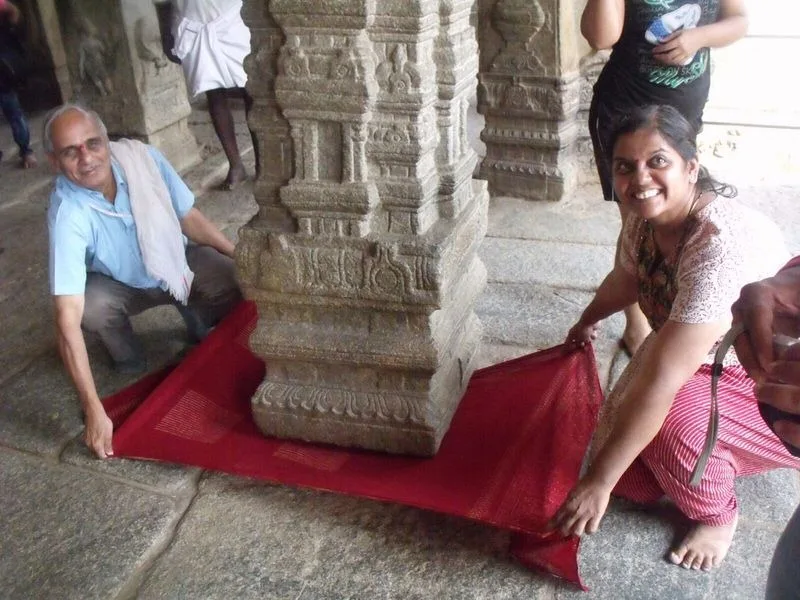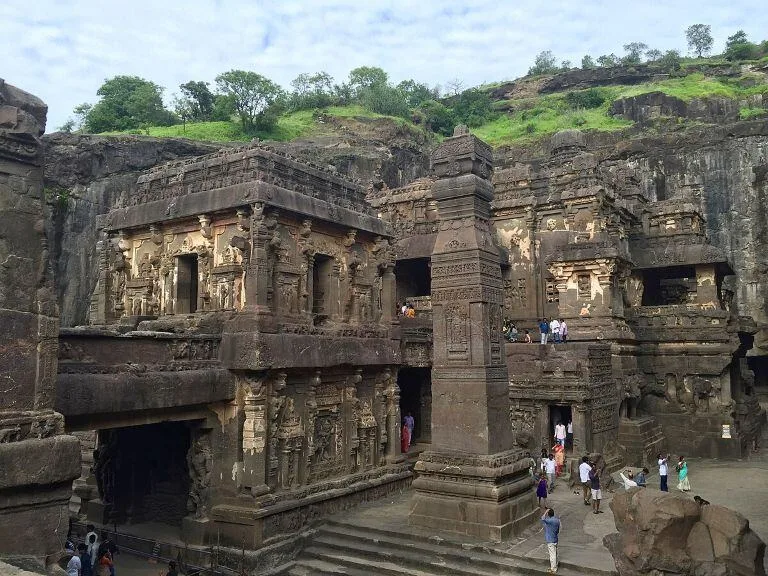From ancient lore to modern marvels, Hindu mythology has always blended seamlessly with the mysterious and the miraculous. Among the most intriguing phenomena are the floating temples and statues found across India—sacred structures and idols that defy the laws of gravity, sparking awe, devotion, and scientific curiosity alike. In this blog, we dive deep into the legends, scientific theories, historical context, and the enduring spiritual allure behind these floating Hindu temples and idols.
The Concept of Floating Statues in Hindu Tradition
The idea of a floating statue isn’t just modern fascination; it’s deeply embedded in Hindu spirituality. Many devotees believe that when a deity’s idol floats or defies natural laws, it’s a divine sign of that god or goddess’s presence and power. Floating idols are seen as physical manifestations of divine will—symbols that inspire faith and surrender.
In Hindu rituals and practices, the concept of divinity interacting with nature is widespread. When an idol appears to defy physical principles, it’s considered a darshan (sacred sight) granted by the deity. The inexplicable behavior of certain temple structures and idols becomes a medium of communication between the divine and the mortal world.
Famous Floating Hindu Temples and Statues
Let’s explore some of the most well-known and lesser-known floating miracles across India that are revered not just for their beauty but for their divine mystery.
The Floating Stone of Rameshwaram

Located in Tamil Nadu, Rameshwaram is linked to Lord Rama and the epic Ramayana. Here, local stories talk about stones that float in water—believed to be used by Lord Hanuman and the Vanara Sena to build the Rama Setu bridge to Lanka. Visitors can still see pumice stones that appear to float in temple tanks.
Scientific Theory: The stones are likely pumice, a type of volcanic rock filled with air pockets, allowing it to float.
Spiritual Belief: The phenomenon is viewed as proof of the Ramayana’s historical truth and divine intervention.
These stones are revered not as mere geological occurrences, but as relics of a sacred narrative that shaped an entire culture’s belief system. People from across the globe travel to witness them and perform rituals, reaffirming their connection to the divine.
The Hanging Pillar of Lepakshi Temple

While not technically floating, the famed hanging pillar of Lepakshi in Andhra Pradesh is a stone marvel. One of the temple’s 70 pillars hangs from the ceiling without touching the ground, allowing devotees to pass cloth underneath it as a mark of faith.
Engineering Mystery: Experts believe the temple’s weight distribution and precision engineering are responsible.
Religious Impact: It’s seen as a symbol of divine architecture, with the temple dedicated to Veerabhadra, a fierce incarnation of Lord Shiva.
This suspended pillar challenges the architectural capabilities of its time. It’s often cited by researchers and historians as evidence of advanced ancient Indian engineering techniques.
The Floating Shivling of Gangeshwar Temple, Gujarat
In Diu, Gujarat, the Gangeshwar Temple features five shivlings partially submerged in the Arabian Sea. During high tide, the lingams appear to float as waves wash over them.
Geological Phenomenon: The temple is built in a coastal cave where tide levels create the illusion.
Devotional Aura: Many believe the shivlings were established by the Pandavas, connecting them to Mahabharata.
Despite being weathered by sea and time, the lingams remain intact. Their resilience against natural forces enhances their sanctity and provides a physical form to the idea of eternal divinity.
The Magnetic Hill of Ladakh and Temple of Gurdwara Pathar Sahib

Though not a Hindu temple, this example is often included due to its spiritual magnetism. Near the Gurdwara, vehicles seem to move uphill on their own, attributed to magnetic forces.
Scientific Explanation: It is an optical illusion caused by the layout of the surrounding slopes.
Mythic Connection: Locals associate this phenomenon with spiritual energy and divine presence.
The Magnetic Hill is often visited alongside ancient Buddhist and Hindu shrines, offering a multi-faith experience that emphasizes India’s layered spiritual landscape.
The Floating Idol of Lord Narasimha, Andhra Pradesh
In the Ahobilam region, legends say that a statue of Lord Narasimha once floated mid-air. Though the exact location has faded from memory, stories persist of a miraculous idol unaffected by gravity.
Symbolic Interpretation: Seen as the divine nature of Narasimha, who is both fierce and ethereal.
Such legends are often preserved through oral traditions, passed down by temple priests and local elders. They are not just stories but guiding forces of devotion.
The Floating Temples of Submerged Towns
Temples submerged under reservoirs—like those under the Tungabhadra reservoir or hidden beneath lakes in Kedarnath—appear to float during drought season as water levels recede.
Geographic Conditions: Reservoir-induced submersion and seasonal changes create stunning visuals.
Religious Belief: These moments are seen as windows into sacred pasts reclaimed from water.
These temples evoke a deep emotional response, especially among displaced villagers and pilgrims who see the surfacing structures as a sign of hope and renewal.
The Kailasa Temple, Ellora: Suspended by Design

Though not floating in a literal sense, the Kailasa Temple in Maharashtra was carved top-down from a single rock, creating the illusion of a suspended structure.
Engineering Genius: Carved from volcanic basalt using reverse architecture.
Spiritual Meaning: A symbol of devotion that defies normal construction logic.
Kailasa Temple is a UNESCO World Heritage site and continues to mystify architects with its scale and craftsmanship. Some even argue it couldn’t be replicated today.
Floating Myths in Ancient Texts
Ancient texts like the Ramayana, Mahabharata, and Puranas are full of references to floating cities, divine flying chariots, and gravity-defying palaces:
- Rama Setu, said to have been built by floating stones
- Pushpak Vimana, a flying chariot described with detail
- Vimana-pura, a floating city of celestial beings
These stories might sound fantastical, but they form the backbone of India’s cultural and spiritual psyche. Whether interpreted literally or symbolically, they inspire reverence for the supernatural.
Scientific vs. Spiritual Interpretations
Where science sees air pockets, magnetism, and optical illusions, spirituality sees divine play (Leela). The dual lens adds depth to these miracles:
- Science: Offers plausible, testable hypotheses about material density, geology, and architectural engineering.
- Faith: Transforms the scientific marvel into a devotional experience.
This duality allows for a harmonious coexistence of empirical inquiry and mystical belief—a balance that is rare and beautiful.
Devotee Experiences and Testimonials
Modern pilgrims share countless testimonials:
- Miraculous cures: Visitors claim to be healed from ailments after touching floating idols.
- Visual hallucinations: Some report seeing lights or celestial forms above temples.
- Emotional transformation: People describe a shift in spiritual energy upon entering such temples.
These testimonies, whether scientifically validated or not, deepen the sense of awe and mystery surrounding these sites.
Social Media and the Revival of Ancient Wonders
Platforms like YouTube, Instagram, and even TikTok are reintroducing younger generations to these ancient marvels.
- Channels like MythoExplores and Epic India: Feature viral videos explaining the mystery and legends.
- Virtual pilgrimages: 360-degree temple tours now allow global audiences to witness the miracles remotely.
- Hashtags like #FloatingTemples and #AncientWonders: Garner millions of views, sparking debates and discussions.
This online wave is leading to increased tourism, renewed faith, and further archaeological interest.
How to Visit These Temples: Tips for Travelers
- Plan Around Festivals: Visiting during Maha Shivratri, Ram Navami, or local temple fests enhances the experience.
- Respect Local Beliefs: Regardless of your spiritual stance, honor the sentiments of devotees.
- Look for Guided Tours: Some mysteries are best explored with historical and mythological context.
What These Temples Teach Us
Floating temples and idols are more than just architectural or geological marvels. They are reminders of humanity’s eternal quest for the divine, and symbols of what happens when belief transcends the limitations of the physical world.
They invite us to look deeper—beyond stone and water, past myth and measurement—into the heart of wonder.
Final Thoughts: Bridging Heaven and Earth
India’s floating temples and statues are not just cultural artifacts; they are portals into a way of seeing the world where the sacred and scientific are not separate but intertwined. Whether you approach them with a skeptic’s eye or a believer’s heart, these marvels stand as living testaments to the human spirit’s desire to reach beyond.
In an age of artificial intelligence and space travel, perhaps the most futuristic idea is the one embedded in the oldest stories—that the divine still walks among us, occasionally suspended in mid-air.
For more interesting mythology facts visit https://www.youtube.com/@Mythoexplorers
For more interesting mythology facts visit https://www.facebook.com/profile.php?id=61577166993705
For more interesting mythology facts visit https://www.instagram.com/mythoexplorers/
To know more about Hindu Mythology read the blog article https://mythfacts.blog/category/hindu-mythology/

